Sanding fiberglass ranks low on my list of favorite things to do, and I had the “itch” to do something else for a day (pun intended). I had ordered twist button canvas fasteners from Sailrite.com after researching price. I bought six sets (eye, twist fastener, and backing plates) for $.94 each. They were far and away the least expensive place to get them, even with shipping added in (about $6). A set of four would have cost so much more at West Marine ($14 for two sets) and approximately $2.60 each at Defender Marine. If there is any way you can avoid buying anything at West Marine, you should. On average, West marks up their prices at 1/3 above any other place on the web, and often above any other chandlery in town. Their stock in trade is convenience – one-stop shopping (or so they hope). On other items, they simply fleece the customer. There is no reason on earth to charge the sort of prices they do for some products, except that – amazingly – people will buy it anyway to avoid having to plan ahead. Occasionally you can get an item on sale at West that is a reasonably good deal. That’s the only time I really consider buying at West.
Oh yeah. . . the project! I purchased a used headsail deck bag with my “new” (to me) jib, but it was a bit worn in one area. The aft closure of the bag depended on UV damaged hook-and-loop fasteners. The hook-and-loop tape and had lost most of its grip, and I planned to change the closure method with canvas twist-and-eye sets. I don’t really like snaps – they corrode, can be difficult to operate when they age, and can lose their grip. These twist fasteners are fool-proof, don’t hurt your arthritic hands because they don’t become difficult to operate, etc..
The piece of green webbing above was used to form a loop in the back of the bag for support off the deck.
Tuesday, June 16, 2015
Canvas Work – A Break From Dinghy Restoration
Over on s/v Cay of Sea, Rick takes a break from his dinghy refinishing and does a little canvas work:
Labels:
canvas,
s/v Cay of Sea
Subscribe to:
Post Comments (Atom)
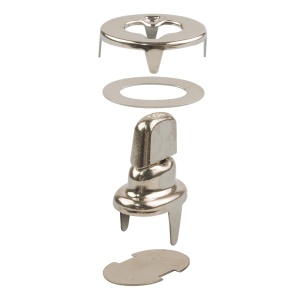
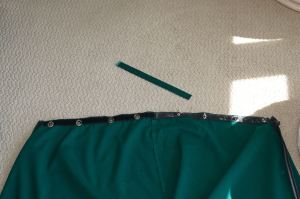
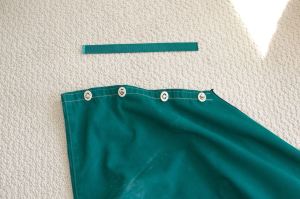
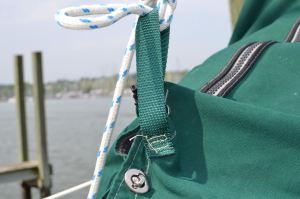
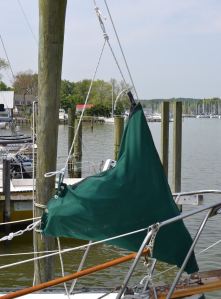












No comments:
Post a Comment